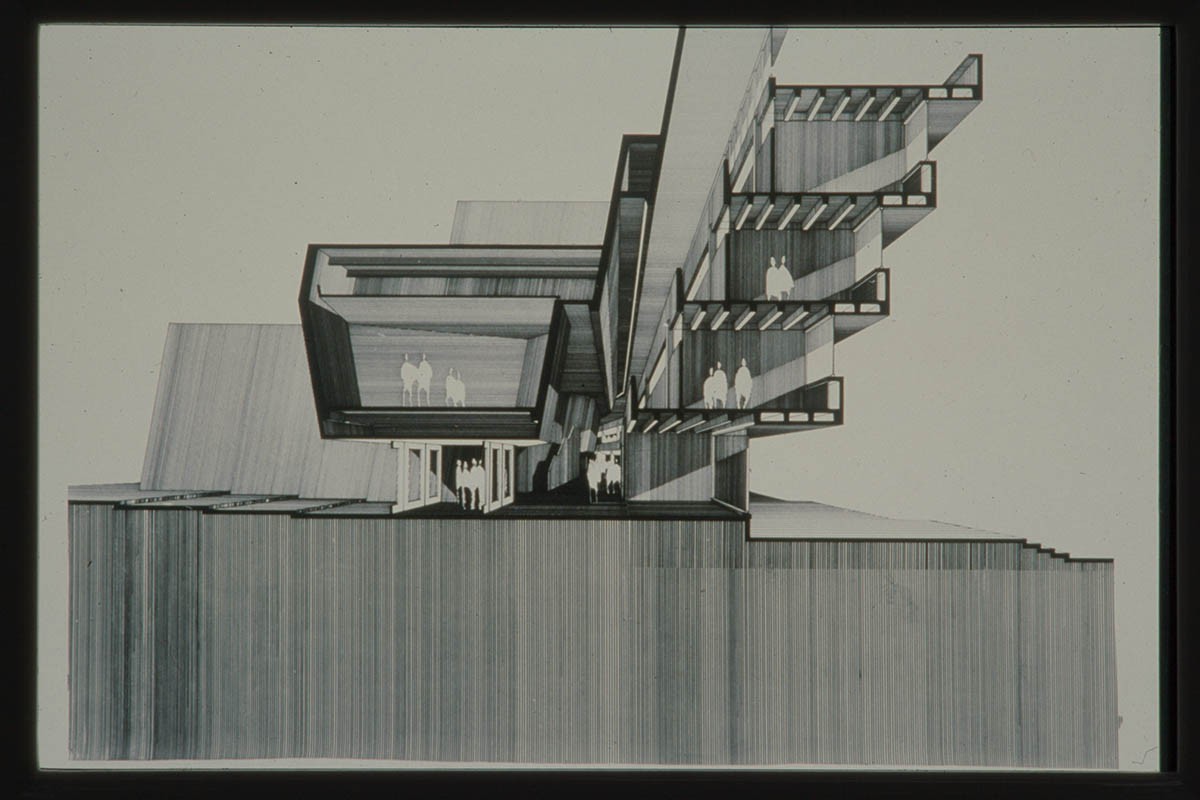John Andrews
John Andrews (MArch ’58) was the architect of a remarkable series of buildings, from Scarborough College in Toronto’s outer suburbs in 1965 to the Intelsat Headquarters in Washington, DC, in 1988. In between came a bright and prolific career, with buildings completed across Canada, the United States, and Andrews’s native home of Australia, including George Gund Hall at the Harvard University Graduate School of Design (GSD). This year, the GSD is celebrating the 50th anniversary of Gund Hall, which was completed in 1972 at the height of Andrews’s international career.
Reflecting changes in global architectural culture, Andrews’s fame waned as quickly as it had developed. In the face of postmodernism’s rise, Andrews remained committed to an essentially modernist approach: design should redeem the built world, making it better for everyone. His approach was late modernist in that it maintained a more circumspect view of building technology than first-generation modern architects, and it had a more contextual appreciation of the urban scale.
More than anything, Andrews was proud of what he built. He saw himself as a pragmatic architect rather than a theorist or a designer of speculative schemes—he often argued that his designs were based on “common sense,” solving design problems on the drawing board and construction sites. But there are other achievements as well. At the height of his career, he was widely celebrated: in 1971, he became the only non-American architect inducted into the American Academy of Arts and Letters; in 1980, he received the Gold Medal of the Royal Australian Institute of Architects; and in 1983, he was one of two international speakers at China’s first national convention of architects. In 1972, he was named by Philip Drew as a leader of the “third generation” of modern architects, along with James Stirling, Kiyonori Kikutake, Robert Venturi, and others. For ten years from 1978, Andrews worked with the Australia Council, Australia’s preeminent arts organization, to promote the country’s architecture nationally and internationally. He served on the juries for two major international design competitions: for the Australian Parliament (1979), won by Romaldo Giurgola, and The Peak Leisure Club in Hong Kong (1983), won by Zaha Hadid.
These accomplishments speak to Andrews’s engagement with design culture and its publics that went beyond common sense: the sensibilities embodied in his work had—and arguably still have—broader application than in just his own buildings. They also suggest that this sensibility was not common at all, but remarkable. Uncommon sense
